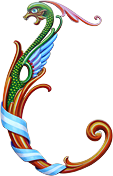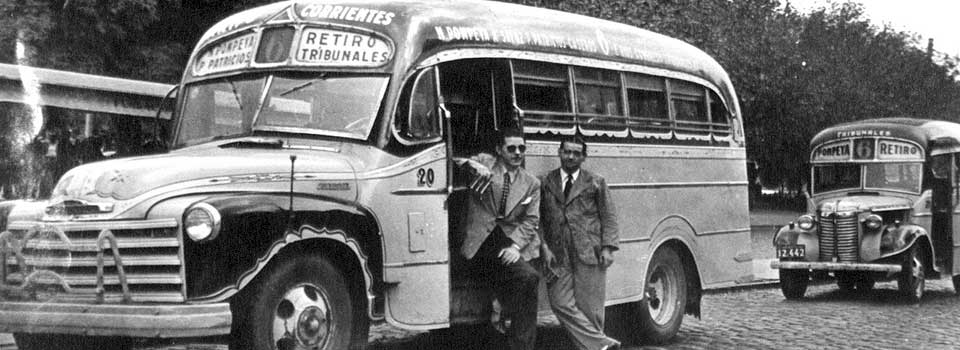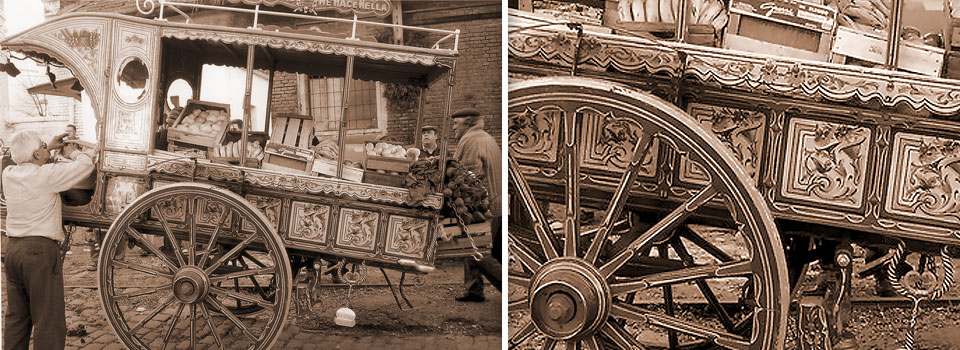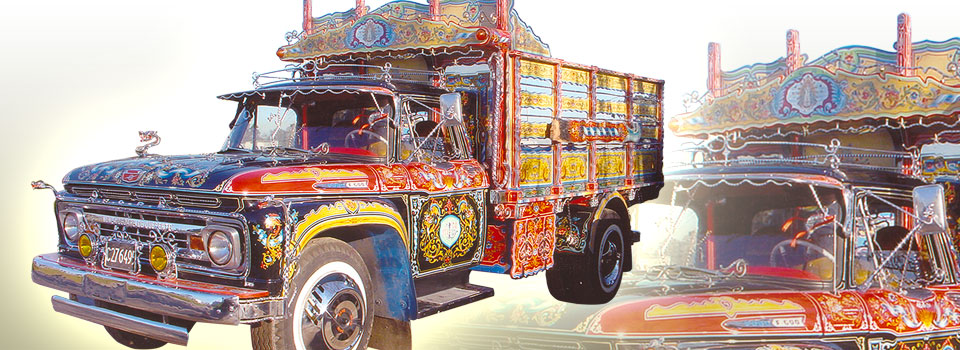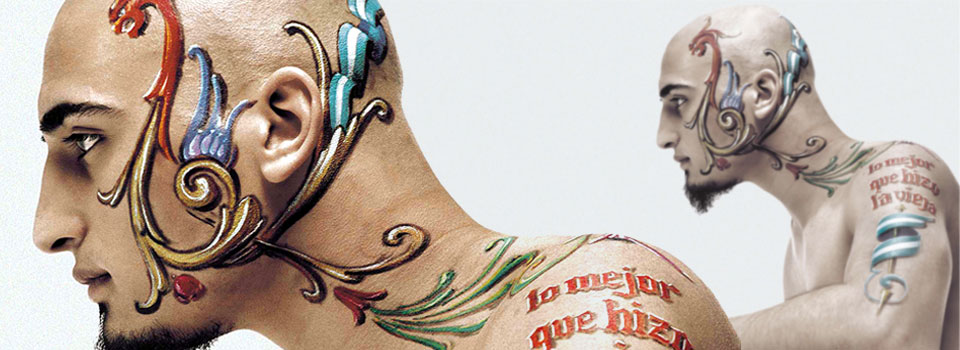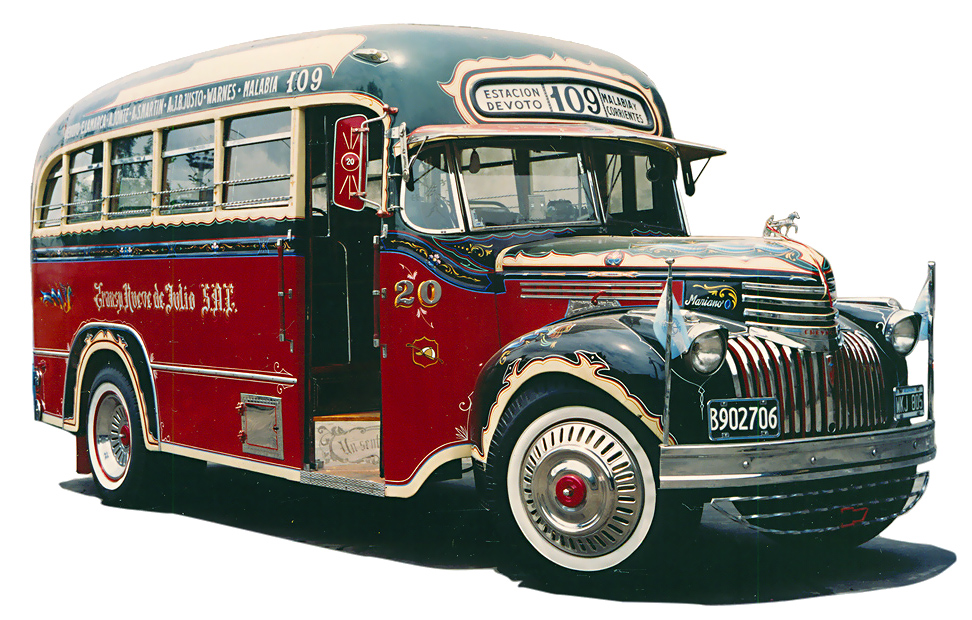The fileteado porteño was born in Buenos Aires at the beginning of the 20th century as a popular decorative practice.
It originated in wagon factories, where the first teachers of the trade developed it spontaneously until it was fully matured with shapes and color. For many years, the city’s cars and wagons had an original decoration which was embraced by buses and trucks.
Because it was a popular art, there is very little documentation on fileteado. There is not an exact date that marks its birth, or a first artist for the genre. This is why the history of fileteado is formed from individual testimonies.
According to the records, the pioneers of this art were Italian immigrants, who worked at the wagon factories and painted the first ornaments on the vehicles. In the beginning, it was all about simple lines filling the wagon’s panels, or separating two colors on the side. In time, more decorative elements were added, and started to shape the characteristics of fileteado. The first three known artists of the genre were Salvador Venturo, Vicente Brunetti and Cecilio Pascarella.
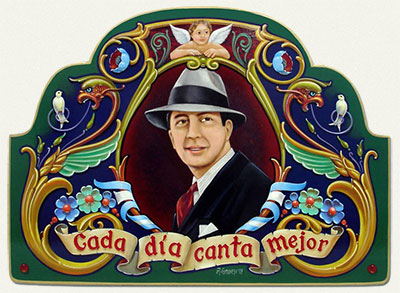
Carlos Gardel
At that time, several guilds were working on the wagon construction
within the same shop; the carpenters assembled the box and the wheels
with hardwood; the blacksmiths melted and nickeled the metallic
elements, and the painters prepared the background colors.
Finally, it was the filete artist’s turn: they decorated the wagons to the
owner’s preferences, within the constraints of time and money.
Generally, the work could be divided into two styles: “more full” or
“less full” and typically, each wagon was an elaborated piece, a
product of the work of different craftsmen.
The filete quickly developed into higher levels of complexity and severals techniques and decorative elements started to form a collection that made filete a unique genre different from anything anyone had ever seen. The main formal characteristics of fileteado are: 1– the high levels of stylization, 2– the preponderance of lively colors, 3– shades that create the feeling of image depth, 4– usage of gothic typography or highly ornamental characters, 5– an almost obsessive usage of symmetry, 6– the enclosure of each composition in a painted frame (which takes the shape of the painting surface), 7– the overload of available space, and 8– symbolical conceptualization of many of the represented objects (for example, the horseshoe as a symbol of good luck, dragons as a symbol of fierceness or virility).
Regarding motifs, most of them were taken from architectural elements
of the time, as well as some ornamentation sold in local paint shops.
The most recognized style is the neoclassic or “grotesque”, which is
known for an elaborate development of spirals, and not Art Noveau,
since this last style is characterized by the “whip line”, absent from
the first filete works.
On the other hand, the theme was a product of popular culture. Images of Carlos Gardel, the Virgin of Luján and other countryside images were used to fill the central ovals in some of the compositions. The written messages were (besides the vehicle’s owner information) mostly phrases and popular sayings that constituted the “wisdom of the brief” that Jorge Luis Borges once defined as the “judgmental side” of wagons. This comes to show that the filete was done not only with aesthetic purposes, but also as a sample of the social and cultural values of the Buenos Aires residents.
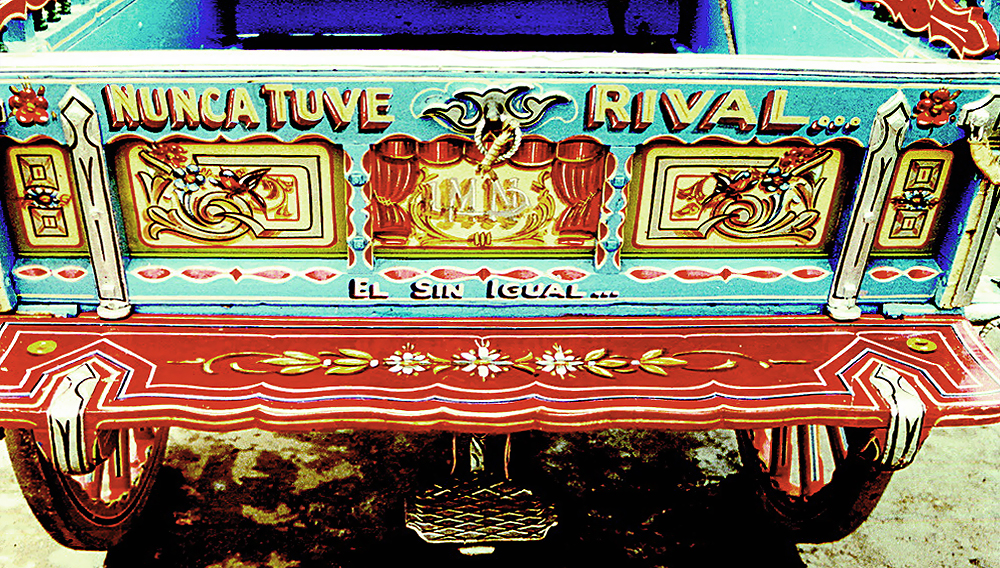
Carro fileteado
Progress brought the inevitable substitution of the wagon by the truck, and the decorative motifs first adapted to the boxes of the trucks, and were even made in the same shops where the teachers worked.
New motifs were invented to decorate the truck cabins. Urban buses, called “colectivos”, also adopted the filete as an ornament, with a more austere and simple look than the wagon, since it was not divided into panels. Wagons, trucks and buses drove around town showing these decorations, but people did not value this as an aesthetic manifestation; it was something they were used to, so the filete art was excluded from the local fine arts groups. The owners of the vehicles and the teachers of filete kept the style alive. For example, a grocer’s shop could negotiate with an artist a job for its truck, rich in colors and elements, and with a possible allegory made to suit the shop’s needs. On the street, as the truck was exposed to the elements, the livery would slowly corrode. If it wasn’t restored in a reasonable amount of time, it was lost forever, as in most cases. It’s interesting to observe that filete art only grew into an artistic genre after many years of being common practice.
The first serious attempt at appreciating the filete art was the acquisition of boards of different artist made by Esther Barugel and Nicolás Rubió. With them, they made the first gallery exhibit in 1970. Their work included the edition of the book Los maestros fileteadores de Buenos Aires (The Filete Masters of Buenos Aires) in 1994.
But nothing could prevent the decline of the filete in vehicles in the ‘70s: a law was passed in 1975 that banned the filete from the Buenos Aires urban buses. Most of the shops that employed filete artists were closed, and above all, the national economy was in crisis. Many of the teachers died and, without any work to be done, none of them had been able to teach the new generation.
Maybe this partial disappearance was necessary for the filete to start gaining new ground that was unthinkable at the time. From then on, the filete was incorporated into easel paintings, object decorations and advertisements from certain brands. Even though this detached the filete from its original context and traditional techniques, it also gave the filete a great deal of autonomy because because it start to be applied to new uses, like graphic design, body painting, advertisement and tatto. Thanks to this appreciation, the filete slowly became the iconographic symbol of the city, along with its most representative music genre: tango.
For some years now, filete art and tango are popular artistic representations of the Buenos Aires identity, and fileteado was inscribed in december 2015 on the Representative List of the Intangible Cultural Heritage of Humanity.
Resources
- Esther Barugel y Nicolás Rubió, 1994 , «Los maestros fileteadores de Buenos Aires» , Buenos Aires , Fondo Nacional de las Artes.
- Norberto P. Cirio , 1996, «El Filete Porteño: bibliografía crítica y definición conceptual» en Segundas jornadas estudios de investigaciones en artes visuales y música , Instituto J. E. Payró, Universidad de Buenos Aires.
- Alfredo Genovese, 2003, “Tratado de fileteado porteño”, Buenos Aires, Grupo Ediciones Porteñas.
